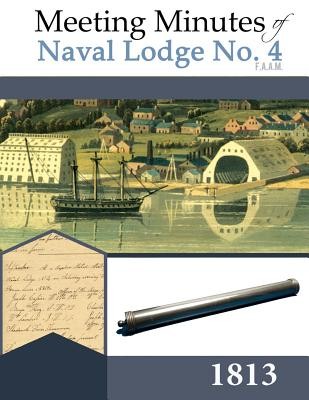
- We will send in 10–14 business days.
- Author: Isaiah Akin
- Publisher: Westphalia Press
- Year: 2013
- Pages: 84
- ISBN-10: 1935907654
- ISBN-13: 9781935907657
- Format: 21.6 x 27.9 x 0.6 cm, minkšti viršeliai
- Language: English
- SAVE -10% with code: EXTRA
Reviews
Description
This book contains the Meeting minutes of Naval Lodge No. 4 F.A.A.M. of Washington DC from 1813, along with articles about the people mentioned and the Washington Navy Yard where many of them worked, and gives insight into Freemasonry in early America. In the book, you will find images of the original minutes from 1813, and on the opposite page, you will find a transcription of those minutes to make reading a bit easier. In addition, notes and articles of historical interest have been added. Strictly speaking, minutes are a record of what happened at a particular meeting. They list who attended, what motions were made, what votes taken, and so on. At first glance, they can be very dry, very mundane. Although written 200 years ago with quill pens and by candlelight, they closely resemble minutes taken at meetings today. But it is that similarity that makes them so important. These minutes help ensure a sense of continuity. They help preserve a shared Masonic history and culture. These minutes help us realize that when George Washington became a Mason in 1752, he went through a ceremony very similar to what we went through to become Masons. They remind us that the symbols we use, and the values we cherish, are very similar to those embraced by Elias Ashmole when he became a Freemason in 1646. These minutes are a symbol that just as Freemasonry has existed for hundreds of years, so it will continue for hundreds more.
EXTRA 10 % discount with code: EXTRA
The promotion ends in 21d.13:44:20
The discount code is valid when purchasing from 10 €. Discounts do not stack.
- Author: Isaiah Akin
- Publisher: Westphalia Press
- Year: 2013
- Pages: 84
- ISBN-10: 1935907654
- ISBN-13: 9781935907657
- Format: 21.6 x 27.9 x 0.6 cm, minkšti viršeliai
- Language: English English
This book contains the Meeting minutes of Naval Lodge No. 4 F.A.A.M. of Washington DC from 1813, along with articles about the people mentioned and the Washington Navy Yard where many of them worked, and gives insight into Freemasonry in early America. In the book, you will find images of the original minutes from 1813, and on the opposite page, you will find a transcription of those minutes to make reading a bit easier. In addition, notes and articles of historical interest have been added. Strictly speaking, minutes are a record of what happened at a particular meeting. They list who attended, what motions were made, what votes taken, and so on. At first glance, they can be very dry, very mundane. Although written 200 years ago with quill pens and by candlelight, they closely resemble minutes taken at meetings today. But it is that similarity that makes them so important. These minutes help ensure a sense of continuity. They help preserve a shared Masonic history and culture. These minutes help us realize that when George Washington became a Mason in 1752, he went through a ceremony very similar to what we went through to become Masons. They remind us that the symbols we use, and the values we cherish, are very similar to those embraced by Elias Ashmole when he became a Freemason in 1646. These minutes are a symbol that just as Freemasonry has existed for hundreds of years, so it will continue for hundreds more.


Reviews